
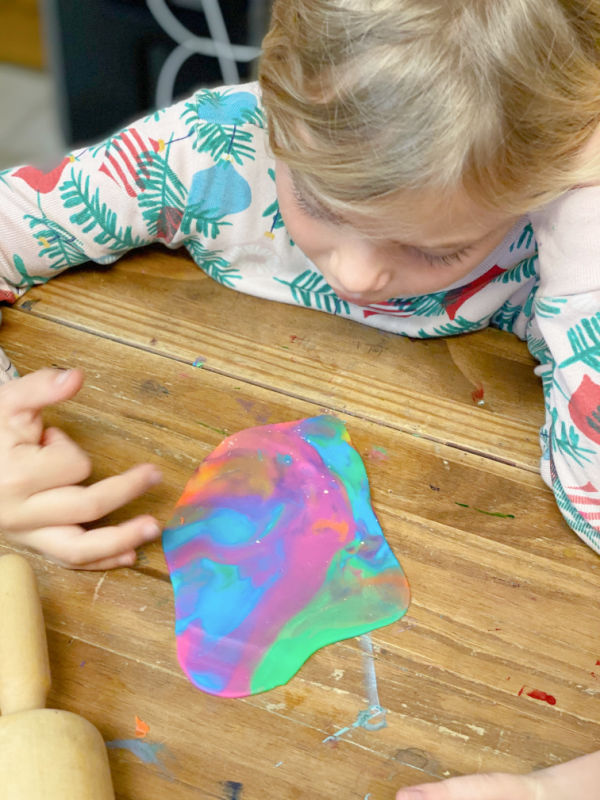
As part of our hands-on geology unit, we read about the layers of the earth. This hands-on geology activity will teach kids about the rock cycle using playdough. We learned a bit about mining too.
Initially this hands-on activity was to discover how the rock cycle works. Layer upon layer of rock compressing together to create our rock layers.
My children added a secret item that reinforced additional concepts. I love when their creativity aligns with my teaching. Read on for what it is!
Learning about the rock layers
We used playdough (affiliate link) and perler beads (affiliate link) for this activity. Perler beads are the secret that made this really cool! If you’d rather make your own play dough, try the best no-cook playdough recipe you can make with (or without!) a stand mixer.
I gave each of the kids a small amount of playdough. We used 5-6 colors. You can use 3-4 depending on what you have.
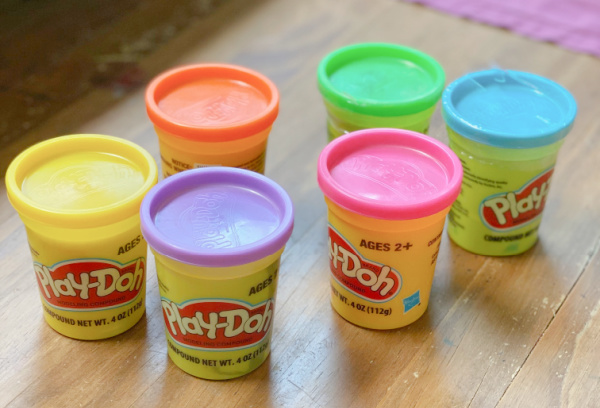
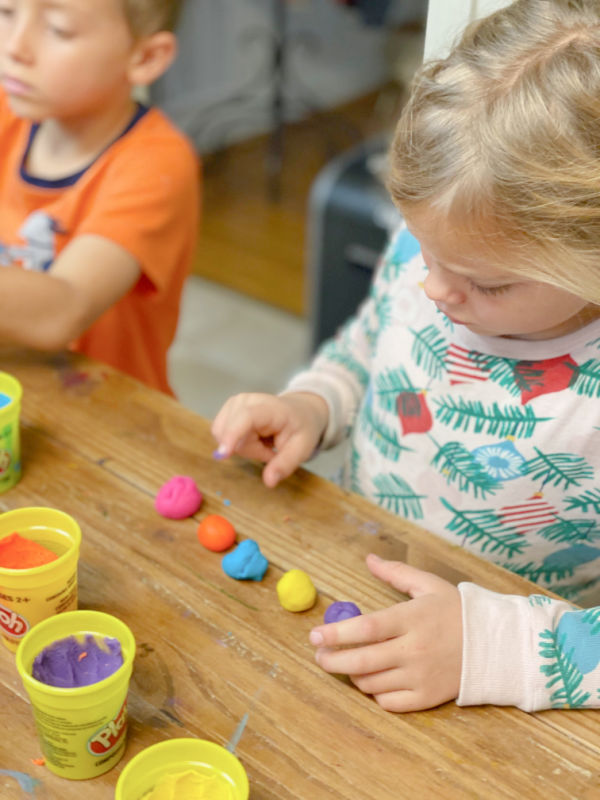
They made a layer with each color pushing it flat. Each layer of playdough represented a layer of rock.
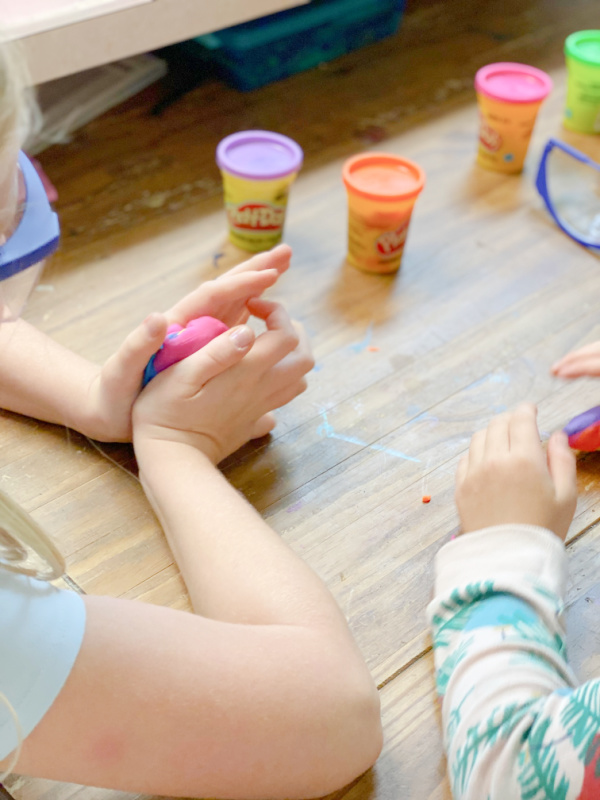
Then they added another layer on top. Over and over they layered the rock. This showed how rock forms in layers.
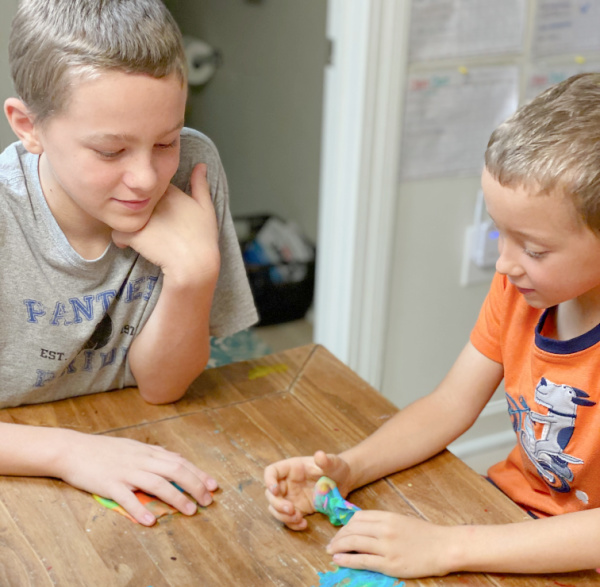
Read more about the science here: Igneous rock flows out from volcano eruptions and sedimentary rock forms from weathering rock. As the layers of volcanic igneous rock and sedimentary rock compress and bend, they mesh together due to heat and pressure. This forms metamorphic rock.
The kids made their layers showing how rock layers lay on top of each other and compress.
>>>For a fun, volcano craft for preschoolers, this hand print volcano card is a creative activity to try.<<<
Hands-on Geology for learning about the rock cycle and mining
To add more detail to this hands-on activity for learning types of rocks, the kids added in some perler beads. At first, I was concerned that it would just create mess. But it added an element that was very cool in the end.
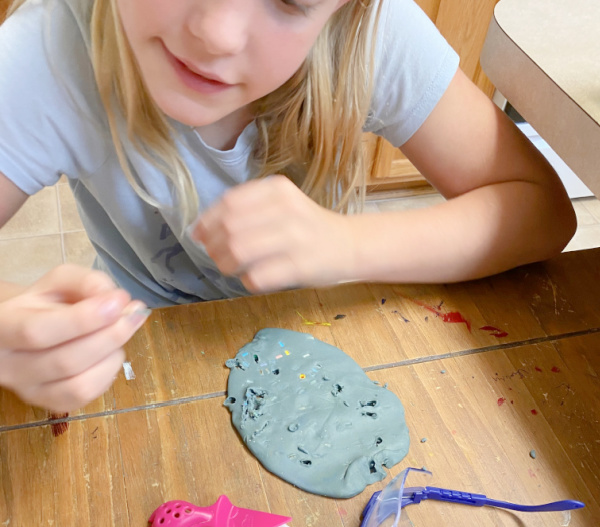
The “chunks” of perler beads represent minerals in the rock that we can mine out. As they worked the playdough layers together with the perler beads the kids could witness exactly how rock layers are formed by compression.
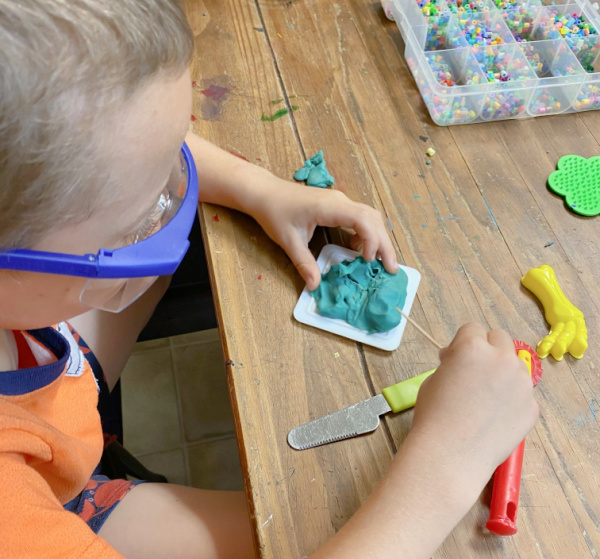
By digging in to remove the beads, they learned how we mine for minerals from layers of rock. We pulled out all the playdough tools for this.
Playdough Rock Cycle Hands-On Geology Activity
We read about rocks and minerals (affiliate links) and gems. Reading before or after any learning activity is a great way to sum everything up. I love using books as an intro.
If you need a simple outline for teaching a learning activity, I have free downloads for infants, toddlers and preschool when you subscribe here.
Kids can add great elements of learning to their activities. Setting up a simple demonstration about how the rock cycle works, investigating how rock layers form, and mining for minerals was high level learning even for my younger kiddos.
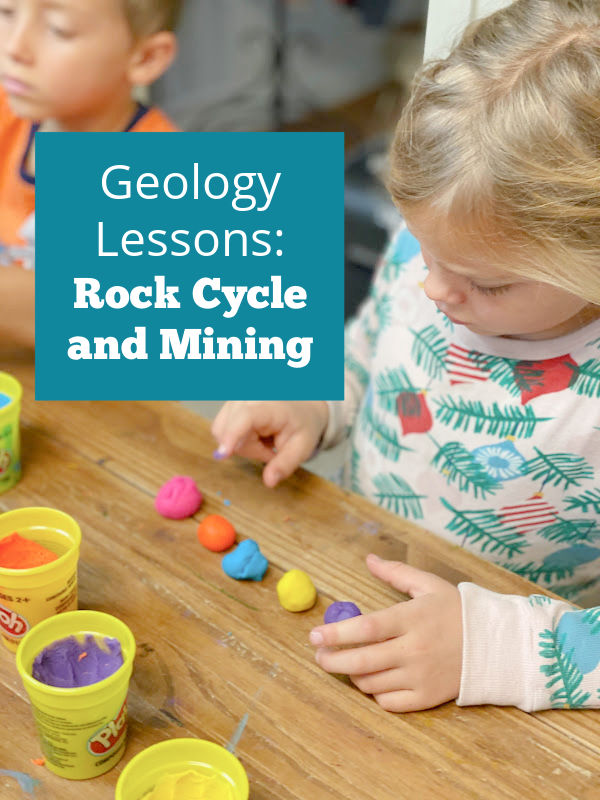
This hands-on geology activity studying about rock layers is a great one for all ages from preschool to high school. Everybody loves hands-on science.
>>>View more activities from our Geology unit here.
>>For more hands-on learning for school age kids go here.
>For preschool activities view this list.
Are your children interested in science concepts? What are they interested in right now?
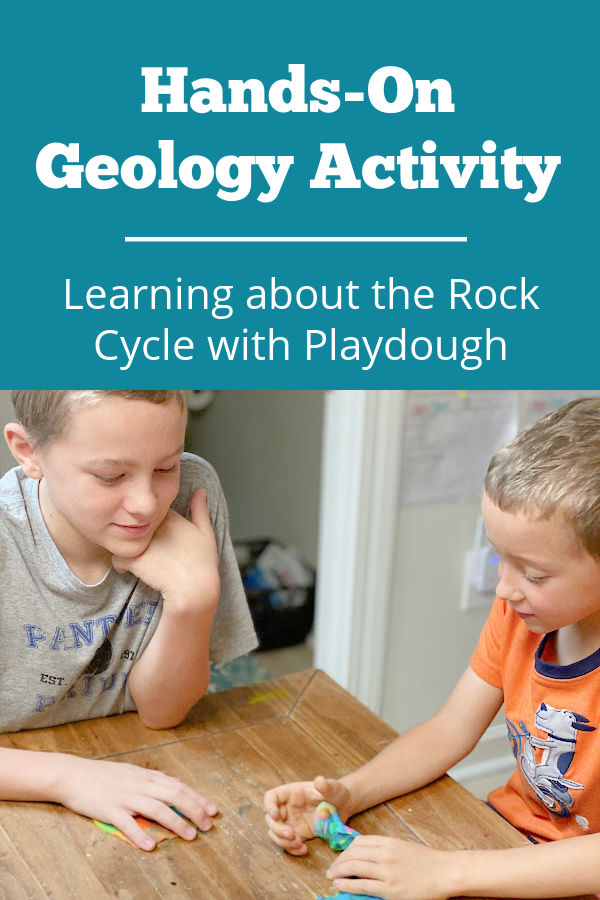

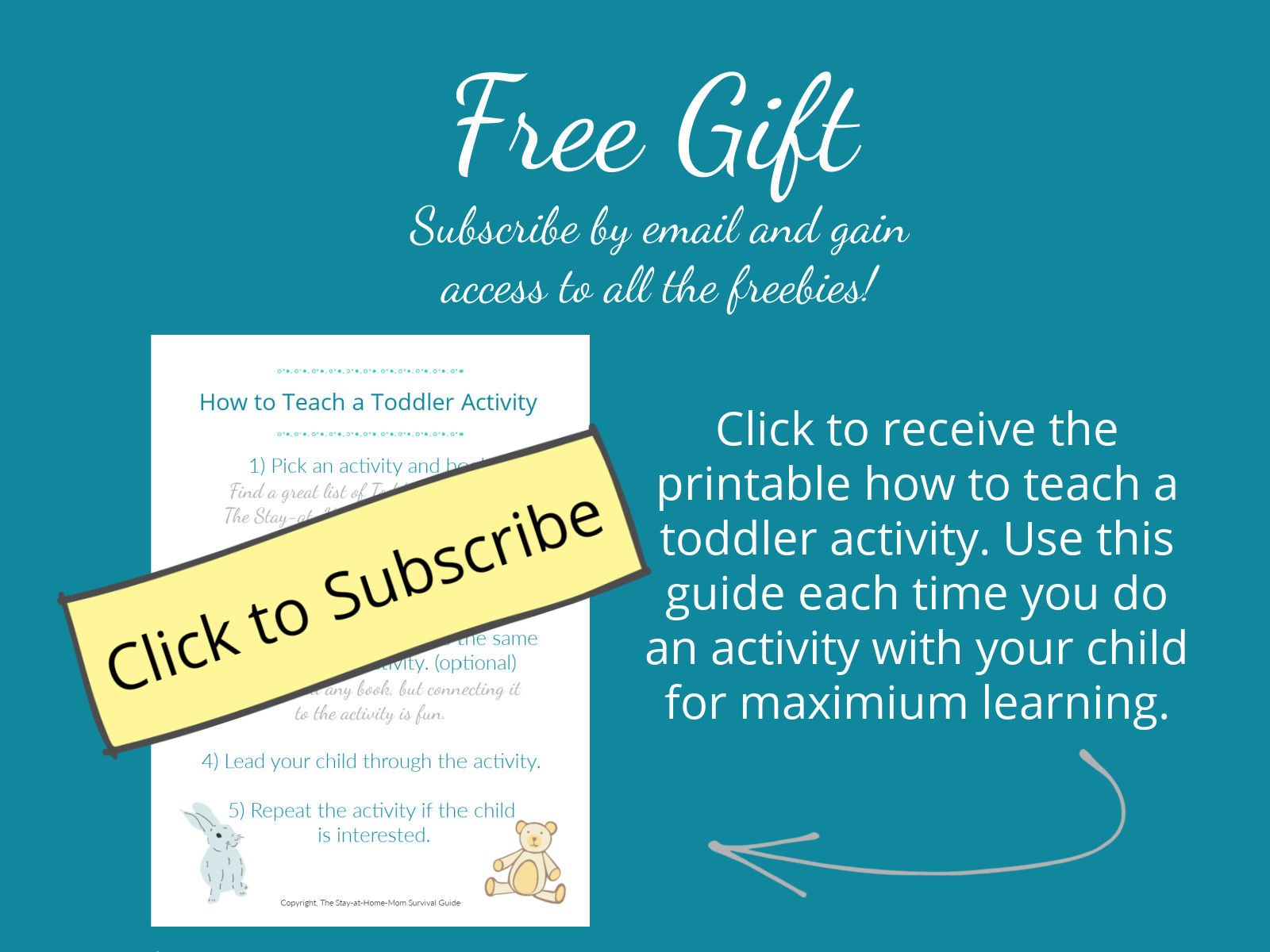
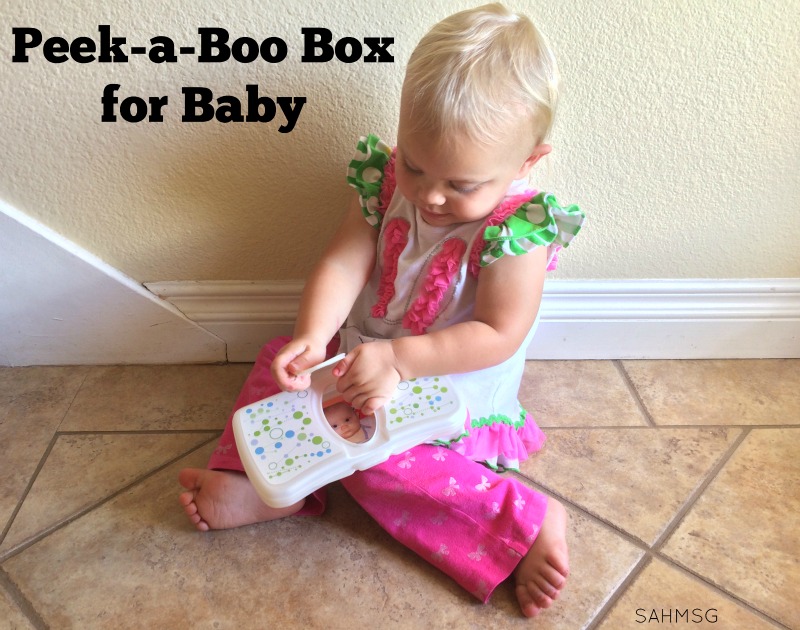
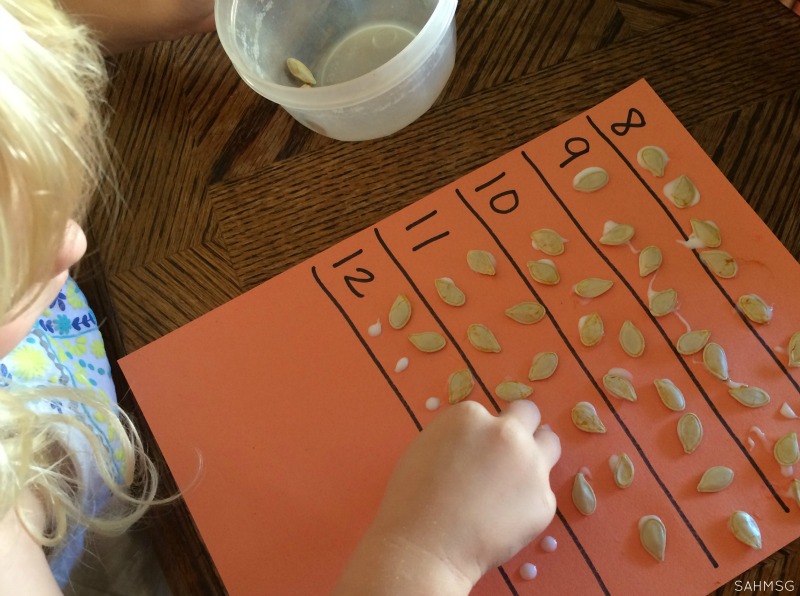
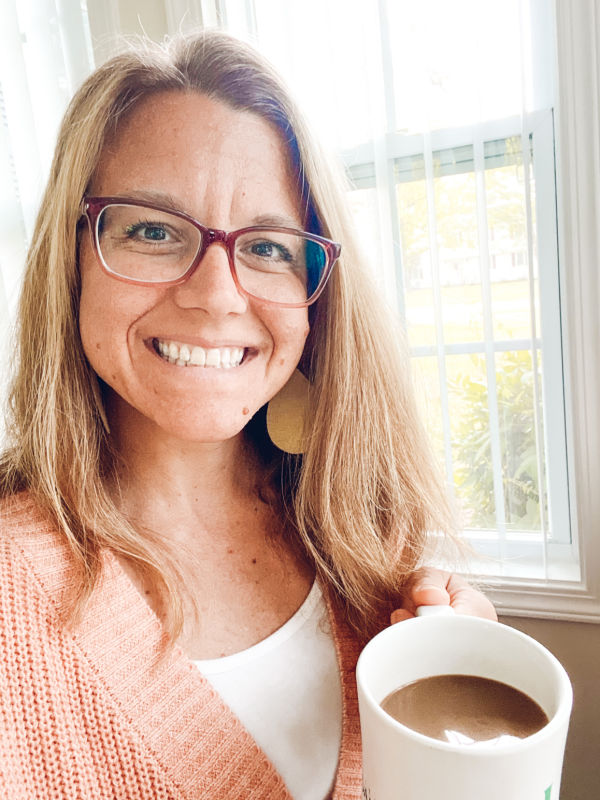
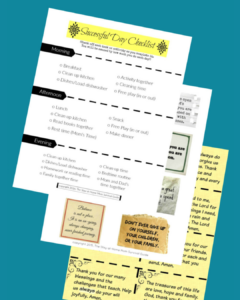

Trackbacks/Pingbacks